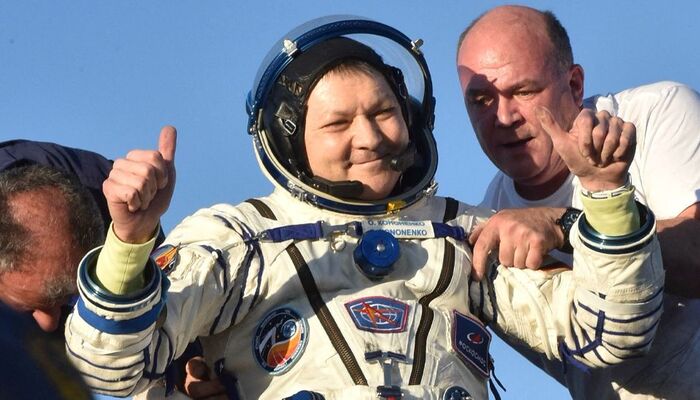The Russian cosmonauts set a new record for the longest stay aboard the International Space Station (ISS), spending 374 days in space. Oleg Kononenko and Nikolai Chub, along with c Tracy Dyson, have safely returned to Earth. They landed in Kazakhstan aboard the Soyuz space capsule after a mission aboard the ISS.
Meanwhile, Tracy Dyson spent around six months on the ISS. Her departure was marked by a bell rung by NASA astronaut Suni Williams, who remains on the ISS after arriving via the Boeing Starliner.
Oleg Kononenko now holds the record for the longest cumulative time spent in space. Across five missions, he has spent an impressive 1,111 days in orbit. Despite their achievements, returning to Earth presented challenges, as the impact of long-term exposure to low gravity was immediately apparent.
Visible Toll on Bodies
Upon landing in the Kazakhstan Steppe, all three astronauts had to be carried out of the spacecraft. Their extended time in space took a visible toll on their bodies. Tracy Dyson was seen in a wheelchair, covered in a blanket, while staff tended to her.
As missions to space become longer, the effects of low gravity on the human body are becoming a growing area of research. Astronauts face numerous physical challenges in space, with muscle and bone mass being the most affected.
Read: PM Shehbaz Sharif Arrives in New York for UNGA Session
Without the constant pull of gravity, astronauts use their muscles much less. On the ISS, they exercise for two-and-a-half hours each day to maintain their strength. Their workouts include squats, deadlifts, and bench presses. They also take diet supplements to support bone health. However, even this rigorous routine is not enough to fully counteract the effects of living in low gravity.
Muscles in the back, neck, calves, and quadriceps—critical for posture—are the hardest hit. Within just two weeks in space, muscle mass can drop by up to 20%. Over missions lasting three to six months, the loss can reach 30%. This rapid muscle loss highlights the difficulty of staying fit in space.
Decline in Bone Mass
In addition to muscle loss, astronauts also experience a decline in bone mass. They lose 1-2% of their bone density for every month spent in space. By comparison, people on Earth lose only 0.5-1% per year. The weakened bones put astronauts at a higher risk of fractures, and recovery can take years.
Interestingly, astronauts often grow taller during their time in space. With no gravity pulling their spines down, their spines elongate, making them appear slightly taller. However, this growth comes with risks, including back pain and the potential for slipped disks once they return to Earth.
As space exploration continues, scientists are working to understand and mitigate the long-term effects of low gravity. The recent return of these astronauts underscores the importance of this research as we prepare for even longer missions in the future.
Follow us on Google News, Instagram, YouTube, Facebook,Whats App, and TikTok for latest updates
